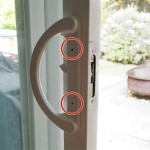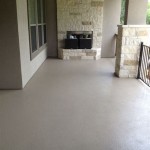How Much Does It Cost To Build a Patio Cover?
Adding a patio cover can significantly enhance the usability and enjoyment of an outdoor space. It provides protection from the elements, creating a comfortable area for relaxation, dining, and entertainment. However, the cost of building a patio cover can vary widely depending on several factors. Understanding these factors is crucial for planning and budgeting effectively for this home improvement project.
The price range to build a patio cover is extensive, typically falling between $8,000 and $50,000. The wide range is attributed to variations in materials, size, design complexity, and local labor costs. A simple, prefabricated aluminum patio cover installed by the homeowner will be on the lower end of the spectrum, while a custom-designed, intricately built wooden or steel structure with professional installation can push the price to the higher end.
To accurately estimate the cost, it's critical to consider all the elements involved and meticulously research local pricing. This involves exploring the specific materials desired, the scope of the project, the need for permits, and the availability and pricing of local contractors. This article will delve into the different aspects influencing the cost of building a patio cover to provide a comprehensive understanding for homeowners considering this project.
Key Factor 1: Materials Used
The choice of materials is one of the most significant determinants of the overall cost of a patio cover. Different materials offer varying levels of durability, aesthetics, and maintenance requirements, which subsequently influence the price.
Wood: Wood is a popular choice for patio covers due to its natural beauty and versatility. Common wood types include cedar, redwood, and pressure-treated lumber. Cedar and redwood are naturally resistant to decay and insects, making them ideal choices for outdoor structures, but they tend to be more expensive than pressure-treated lumber. Pressure-treated lumber is a more budget-friendly option, but it requires regular maintenance and sealing to prevent rot and insect infestation. The cost of a wood patio cover can range from $15 to $40 per square foot, depending on the type of wood and the complexity of the design. The labor cost for wood construction can also be higher due to the intricate cuts and joinery often involved.
Aluminum: Aluminum is a lightweight, durable, and low-maintenance material. It's resistant to rust and corrosion, making it an excellent choice for coastal areas or regions with high humidity. Aluminum patio covers are often prefabricated, which can reduce installation time and cost. The cost of an aluminum patio cover typically ranges from $8 to $25 per square foot. While aluminum offers durability and low maintenance, some homeowners may find its aesthetic less appealing compared to wood.
Steel: Steel offers exceptional strength and durability, allowing for larger spans and more open designs. It's also resistant to pests and fire. However, steel is susceptible to rust and requires proper coating and maintenance to prevent corrosion. Steel patio covers are generally more expensive than wood or aluminum, ranging from $25 to $50 per square foot. The higher cost is attributable to the material itself and the specialized labor required for welding and fabrication.
Fabric: Fabric patio covers, often in the form of retractable awnings or shade sails, provide a flexible and relatively inexpensive shading solution. The cost can range from $5 to $20 per square foot, depending on the type of fabric, the size of the cover, and the type of frame used. Fabric covers offer versatility and can be easily retracted or removed during the winter months. However, they may not be as durable as other materials and may require more frequent replacement.
Polycarbonate: Polycarbonate panels are a lightweight and durable option for roofing a patio cover. They allow natural light to filter through while providing protection from rain and UV rays. Polycarbonate panels are available in various thicknesses and colors, offering different levels of light transmission and shading. The cost of a polycarbonate roof can range from $10 to $30 per square foot. The durability and light-transmitting properties of polycarbonate make it a popular choice for homeowners seeking a balance between protection and natural light.
Key Factor 2: Design and Complexity
The design and complexity of the patio cover significantly impact the overall cost. A simple, freestanding structure will generally be less expensive than a custom-designed, attached patio cover with intricate details and features.
Attached vs. Freestanding: Attached patio covers, which are connected to the house, typically require more structural support and careful integration with the existing roofline. This often involves flashing, which prevents water damage where the roof meets the patio cover. Freestanding patio covers, on the other hand, offer more flexibility in terms of placement and design, but they require independent support structures. Attached patio covers tend to be more expensive due to the added complexity of integrating them with the existing building structure.
Roof Style: The roof style of the patio cover also influences the cost. A simple flat roof is typically the least expensive option, while a gabled or vaulted roof can add architectural interest but also increase the cost. Gabled roofs require more materials and labor to construct, while vaulted roofs may require specialized framing techniques.
Size: The size of the patio cover is a direct factor in material costs. A larger patio cover will require more materials and labor, leading to a higher overall cost. Planning the dimensions of the patio cover is crucial to ensure it meets the needs of the space without exceeding the budget.
Permitting: Patio covers often require building permits, especially if they are attached to the house or exceed a certain size. Permit fees can vary depending on the location and the complexity of the project. It's essential to research local building codes and obtain the necessary permits before starting construction. Failing to obtain the required permits can result in fines and delays.
Customization: Adding custom features, such as built-in lighting, ceiling fans, or outdoor kitchens, can significantly increase the cost of the patio cover. These features require additional materials, labor, and electrical or plumbing work. While custom features can enhance the functionality and enjoyment of the patio cover, it's important to carefully consider the impact on the budget.
Key Factor 3: Labor Costs and Installation
Labor costs account for a significant portion of the overall cost of building a patio cover. The price of labor varies depending on the region, the complexity of the project, and the experience and qualifications of the contractor.
Professional Installation vs. DIY: Installing a patio cover yourself can save money on labor costs, but it requires significant time, skills, and tools. A poorly installed patio cover can lead to structural problems, water damage, and other issues. Hiring a professional contractor ensures that the patio cover is built correctly and meets local building codes. While professional installation adds to the cost, it provides peace of mind and reduces the risk of future problems.
Contractor Selection: Obtaining multiple quotes from different contractors is crucial to ensure a competitive price and a thorough understanding of the project scope. When selecting a contractor, it's important to check their credentials, reviews, and insurance coverage. A reputable contractor will provide a detailed estimate, a clear timeline, and a written contract outlining the terms of the project.
Labor Rates: Labor rates for patio cover installation can vary depending on the region and the contractor's experience. Some contractors charge an hourly rate, while others charge a fixed price for the entire project. It's important to clarify the contractor's payment terms and ensure that they align with the project budget.
Site Preparation: Site preparation may be required before installing the patio cover. This may involve clearing the area, leveling the ground, and pouring a concrete slab. Site preparation costs can vary depending on the condition of the site and the scope of the work. It's important to factor in site preparation costs when estimating the overall cost of the project.
Additional Work: Unexpected issues can arise during patio cover construction, such as the need for additional structural support or electrical work. It's important to have a contingency fund in the budget to cover unexpected costs. Discussing potential problems with the contractor beforehand can help minimize surprises and ensure a smooth construction process.
In conclusion, accurately assessing the cost to build a patio cover requires a careful evaluation of various factors. Material selection impacts cost and durability, design complexity affects construction efforts, and labor costs can fluctuate due to contractor rates and project intricacies. By meticulously analyzing these aspects, homeowners can better estimate expenses and effectively plan for their patio cover project.

How Much Does It Cost To Build A Covered Patio

How Much Does It Cost To Build A Roof Over My Deck 2024 Data

How Much Does It Cost To Build A Patio In Houston

Fixr Com Covered Patio Cost To Build

How Much Does It Cost To Build A Roof Over My Deck Or Patio In Colorado

How Much Does It Cost To Build A Roof Over My Deck 2024 Data

How Much Does Adding A Roof Over Patio Cost 2024

Fixr Com Covered Patio Cost To Build

How Much Does It Cost To Build A Roof Over My Deck Or Patio In Colorado

How Much Do Patio Enclosures Cost 2024 S
Related Posts








